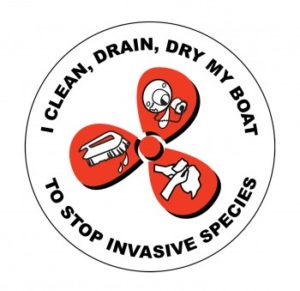Septic Tanks
Most residences within the town of Osoyoos are hooked up to municipal sewers.
Some areas still rely on septic systems to dispose of their waste water.
Why are septic systems a problem for Osoyoos Lake?
Septic tanks have long been identified as a major source of pollution in Osoyoos Lake, because they can leak toxins into the water through the soil. Many are old – even built of wood which has probably long since rotted away – or are situated too close to the lakeshore. Many residences along the lakeshore were built in the 1930 – 1960s and their septic tanks do not comply with current standards. Leaching from the septic fields, however small the amount, is commonplace.
During times of flood the lake levels rise and more septic matter is washed directly into the lake: this is partly why the water level is now strictly monitored and flooding is now rare.
How can I locate my septic tank?
- Look for the sewer pipe that leaves the house. The tank will be 10-20 feet from there, depending on the size of your property.
- Look for a small manhole cover which is used to periodically inspect and pump the tank out.
- Look for an area where the grass is greener.
- You can use a slender metal rod to probe the soil about a foot beneath the surface to locate the tank.
How does a septic tank work?
Designed to prevent disease by collecting, treating, and disposing of wastewater or sewage, a typical household septic system consists of two major components: the septic tank (basically a large concrete, fiberglass or steel box buried in the ground) and the drainfield.
Wastewater from your toilets, showers, sinks etc travels by gravity to the septic tank. The tank’s main purpose is to detain the wastewater for 1 – 2 days. It uses this time to separate solids, greases, oils, and floating objects from the wastewater. Bacteria within the tank start to attack and break down the waste immediately.
Although the bacteria does a good job, they can’t eat everything. Septic tank contents form layers, with scum (lighter solids such as grease and toilet paper) floating on the top, partially treated wastewater in the middle, and the heavier sludge settling at the bottom.
After its 1 – 2 day stay, the partially treated wastewater leaves the tank. If everything is working right, virtually all of the solids have settled out of the water. The wastewater now heads for the drain field. This area is comprised of a series of interconnected pipes that lie in sand or gravel filled trenches. The pipes are perforated.
The wastewater comes through the perforations and is absorbed by the soil, which then acts as a biological filter. Oxygen and organisms in the soil combine to slowly break down any remaining toxins, bacteria, or viruses in the wastewater.
How can I tell if my septic tank is not working properly?
- Greener grass or extra plant growth over the leaching bed.
- Brown or burnt grass in dryer times may indicate the system is too full.
- Standing water or soggy soils in the drainage area
- Slow drainage or backing-up from plumbing fixtures may be a sign.
- Odours may be present after it has been raining and/or when water consumption is high.
- The presence of darker coloured water on the surface of the leaching bed or nearby. Sometimes this fluid will backup into the plumbing fixtures in the home.
- Sump pits in the house can often smell.
Problems with septic systems can be very costly to repair, so ongoing maintenance is key. Properly maintained septic systems have a life span of about 25 years.
Septic systems are meant to be organic. If something can’t break down naturally and quickly, don’t let it enter the septic system.
*A septic system (not just the tank) should be at least 100 feet from a well or from the mean high water mark of a pond, river or lake.
What can I do?
- If you live in an older house, your septic system may need to be replaced or upgraded to avoid damaging the environment.
- Have your septic tank inspected and/or emptied by a professional at least once every 3-5 years; ideally every 2 years.
- Make sure your plumbing fixtures are in good repair. Fix any leaks.
- Restrict and conserve water usage. It takes time for the solids to break down, so the more water you put through the system the less time there is for it to break down.
- Spread your water usage. For example, instead of doing four loads of washing at once do one or two loads a day.
- Direct downspouts, surface and groundwater away from the system to avoid saturating the soil.
- Plan ahead for demand. Some people may add toilets, or showers, without upgrading their septic system. More laundry may be washed than originally anticipated for the system.
- Don’t flush paint, thinners, solvents, nail polish, household cleaners, bleaches and other chemicals. These can cause your organic septic system not to work and send solids out to the leaching bed. Worse yet it can contaminate the soil.
- Don’t flush oils, grease, and fat. These can reduce the biological action of the system and bog down the leaching bed.
- Don’t use a garbage disposal. Try composting instead.
- Don’t drive, build or park on your drainfield. Keep livestock off; use your sprinkler system elsewhere.
- Don’t let hair, cigarettes, personal hygiene products or kitty litter and the likes enter the system.
- Septic additives aren’t necessary and may harm the system.
- Landscape appropriately. Some plant or tree roots could damage the system.






